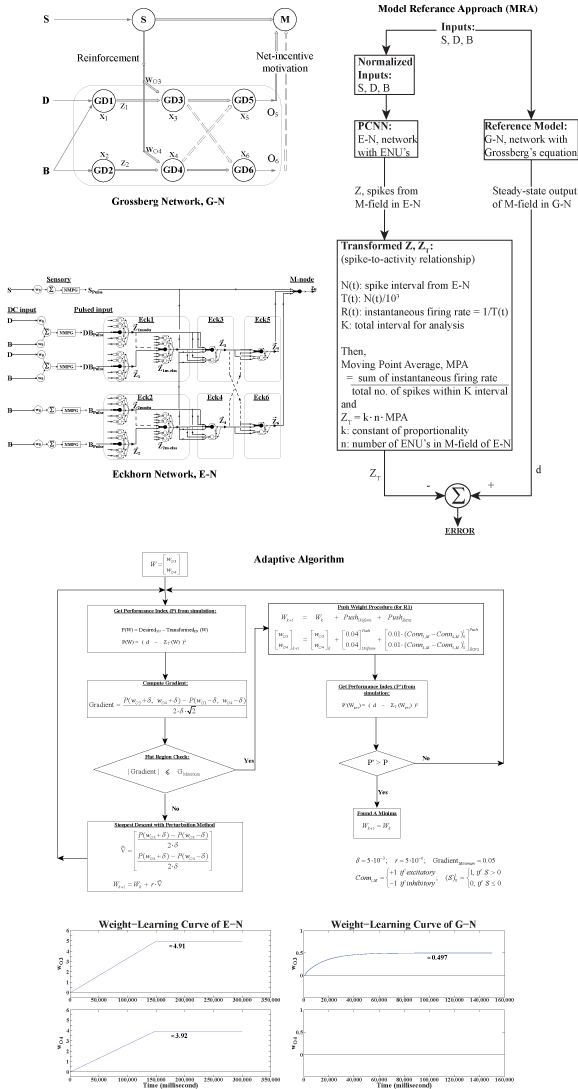Incorporating Phenomenological Larger Scale, Level-Coded Model Adaptive Properties Into A Smaller Scale Model To Achieve An Adaptive Pulse-Coded Model That Is Closer To Physiology.
Abstract
An integration of disciplinary model ideas across disciplines of the neuroscience program is made quantitatively in this thesis. This thesis deals with the particular problem of designing a pulse-coded neural network (PCNN) and achieving an adaptive PCNN (APCNN) based on brain function. This is done by implementing the model-reference adaptation (MRA) technique where an adaptive level-coded model is the reference for the PCNN. The aim of this work is to explore methods for applying scientific reduction to higher-level network systems models in order to produce lower-scale models having closer links to neural physiology. Based on the empirical performance surface, the adaptive algorithm is a combination of gain-scheduling and steepest-descent method, resulting in adaptation of the pulse-coded model. Thus, taking the scientific reduction route an APCNN is successfully designed. Current APCNNs are designed for engineering applications, particularly image processing and hence these networks depart from biological plausibility. To our knowledge the APCNN developed in this thesis is the closest to biology amongst the available APCNNs. The adaptive property of the pulse-coded model is built upon a psycho-physiological foundation and the principles of embedding field theory.
Committee Members:
- Richard B. Wells, PhD (Advisor)
- Onesmo B. Balemba, PhD (Inside Member)
- Stephen M. Krone, PhD (Outside Member)
Table of Contents
- Introduction (641KB)
- Grossberg's Network (G-N)
- Eckhorn Neural Unit (ENU)
- Approach to the problem (386KB)
- Grossberg's Dipole Network (G-DN)
- Adaptation in Grossberg's Network
- Building a PCNN using ENU
- Incorporation of the adaptive property of G-N to achieve APCNN
- Architecture considerations for G-N like network based on ENU (2.3MB)
- Understanding the behaviors of E-DN (369KB)
- Results (535KB)
- Performance Surface
- Adaptation Algorithm
- Learning curve and Weight curves
- Conclusion (33KB)
- Bibliography (32KB)
Alternative, Download the full document. (3.9MB)
Graphical Abstract

Implementing the model reference approach with G-N as the reference, E-N is derived. The adaptive algorithm based on the empirical performance surface of E-N results in weight-learning curve of E-N.
Publication data
Sharma, B. L (2011). Incorporating Phenomenological Larger Scale, Level-Coded Model Adaptive Properties Into A Smaller Scale Model To Achieve An Adaptive Pulse-Coded Model That Is Closer to Physiology, M.S. Thesis (Neuroscience), The University of Idaho, Moscow, ID, USA, June 27.

